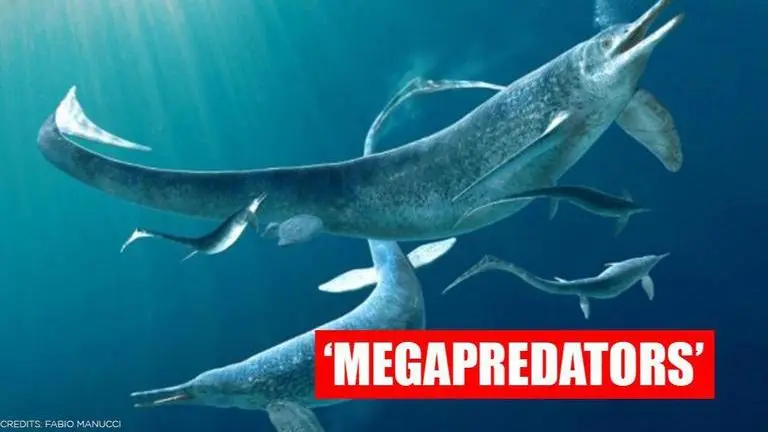Updated 21 August 2020 at 07:05 IST
Fossil of 13-ft-long marine predator found inside larger animal: Study
Groundbreaking discovery that has changed the narrative of life of prehistoric marine animals has been made by identifying 'megapredators' of Mesozoic era.
- Science News
- 2 min read

A groundbreaking discovery that has changed the narrative of life and death in the prehistoric ocean has been made by identifying a complete torso of a 13-foot-long reptile inside a 16-foot-long dolphin-like reptile known as an ichthyosaur. As per the newest study published in journal iScience, the massive marine reptile swallowed a comparatively smaller reptile nearly 240 million years and then died shortly after.
The fossils of both creatures, one inside of the other remained locked until 2010 when scientists in southwestern China began their excavation. Calling it the ‘megapredator’ which is an animal that preys on other large animals, the study elaborated on the oldest known evidence for predation when a thalattosaur was found inside the stomach of a Middle Triassic ichthyosaur in one to several pieces. As per the study, many air-breathing predators have been significant components of the entire marine ecosystem with several being considered as apex predators without direct evidence until now.
The research has elaborate that nearly five-metre-long ichthyosaur had only grasping teeth and yet it managed to swallow the body of a four-metre-long thalattosaur. Because direct evidence was unavailable, for the longest time, researchers have been deriving the diet of fossil marines based on the shape of teeth and size of the body.
Advertisement
If a large species bears large teeth with cutting edges, they were considered to be the apex predators in the marine food chain. However, it was also identified by the scientists that not all marine predators had sharp teeth but were larger in size. But the ichthyosaur like the Guizhouichthyosaurus that Ryosuke Motani, a palaeontologist at the University of California examined was of a smaller size.
Advertisement
Mesozoic era's first 'megapredator'
These ancient marine animals were known to have preyed on slippery, squid-like animals such as cephalopods using their grasping teeth. Making the research more significant, none of the aquatic animals alive during that time was thought to have tackled a large prey. Apex predators were believed to have evolved only until later such as killer whale. Now in the newest research, Motani has suggested that ichthyosaurs were among the Mesozoic era’s first ‘megapredators’ and reportedly noted that they were feeding on animals bigger than humans.
Published By : Aanchal Nigam
Published On: 21 August 2020 at 07:05 IST
